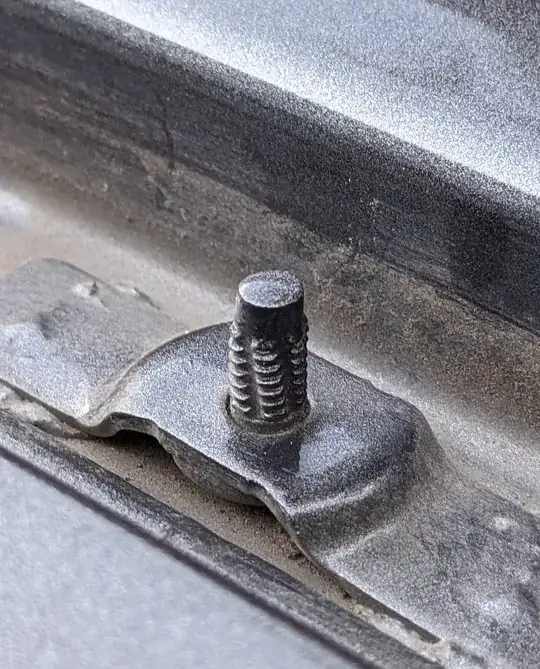Context
The attached photo is a stud in the roof of my vehicle, to which I wish to attach a roof rack. The roof rack should come with nuts to attach it, but they are missing. I need to find an alternative before the manufacturer can send replacements. [Update] The vehicle is a 2017 Chrysler Pacifica. The studs were used to hold plastic clips in place, which held a trim piece (covering the gutter) in place.
Questiona
What is the name of this type of thread? (with gaps)
How do I match a nut to it?
Why does it have those gaps?
What I already tried
I tried an M6-1.0 nut (close match based on the OD of the stud). I can do a couple of turns with fingers, then it gets too tight. It's easy to put on with a wrench (i.e. very little torque), but when removed the threads show some change of shape. Normally I'd consider any change to the threads to be a sign that the nut is not right, and stop right there. But in this case the threads are strange to start with - it's a design I've never seen before. It occurred to me that the thread may be designed to deform slightly as a sort of built-in loc-tite (with the constraint that they can't be used multiple times). I.e. using the ductility of the threads to prevent the nut shaking lose. Or maybe that's just wishful thinking :)
